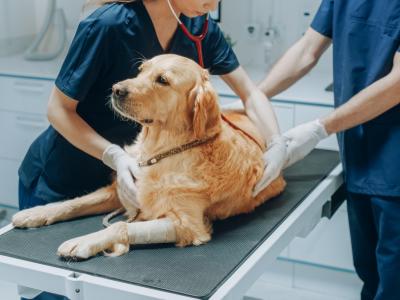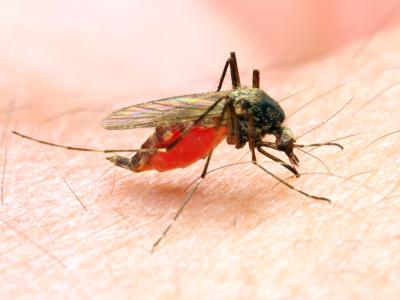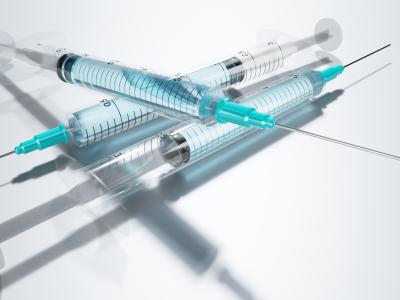Neonatal sepsis risk calculator nearly halves newborn antibiotic use
An online calculator that predicts the risk for early onset sepsis (EOS) can cut antibiotic use in newborns nearly in half, according to a study yesterday in JAMA Pediatrics.
The online calculator, developed by researchers at Kaiser Permanente, the University of Pennsylvania, and the University of California, San Francisco, uses algorithms from two linked risk prediction models for EOS—an invasive bacterial infection in newborns caused by bacteria from the mother's genital or gastrointestinal tract. The prediction models, based on data from more than 600,000 newborns and their mothers, estimate the risk of EOS using gestational age, time from membrane rupture, maternal temperature, group B Streptococcus (GBS) carriage status, intrapartum antibiotic use, and the newborn's clinical presentation.
Under EOS management guidelines developed by the Centers for Disease Control and Prevention (CDC), the American Congress of Obstetricians and Gynecologists, and the American Academy of Pediatrics, the incidence of EOS has fallen significantly. But roughly 15% of newborns are still evaluated for sepsis, and 5% to 8% receive empirical antibiotics while awaiting results of a blood culture. The aim of the prediction models was to reduce the number of newborns who had to get blood cultures and receive antibiotics by figuring out a better way to target newborns who are at risk.
In the study, which included more than 200,000 babies born at 35 weeks or later at Kaiser Permanente hospitals in northern California, investigators compared three different periods: A baseline period (2010-2012), when EOS management was based on CDC guidelines; a learning period, during which staff familiarized themselves with the EOS risk calculator (2012-2014); and the period when the EOS risk calculator was fully implemented (2014-2015). The primary outcome was antibiotic use in the first 24 hours. Secondary outcomes included blood culture use, antibiotic administration between 24 and 72 hours, clinical outcomes, and readmissions for EOS.
In a comparison of the baseline period with the EOS calculator period, empirical antibiotic use in the first 24 hours dropped from 5% to 2.6%, and blood culture use declined from 14.5% to 4.9%. No increase in antibiotic use occurred between 24 and 72 hours after birth. The incidence of culture-confirmed EOS was similar during the three periods (0.2 to 0.3 per 1,000 births), and readmission for EOS was rare and did not differ statistically. Incidence of adverse outcomes was unchanged.
"Experts in neonatology have questioned the need for high rates of empirical antibiotic treatment among term and late pre-term newborns," the authors conclude. "Our study suggests that antibiotic stewardship can safely begin at birth."
Feb 20 JAMA Pediatrics abstract
Tyson says it will eliminate use of all antibiotics in its chicken
Tyson Foods Inc, the largest US chicken producer, announced today that it will eliminate the use of all antibiotics in fresh and frozen chicken products bearing the company name, according to media reports. The announcement was made at an industry conference.
The switch to chickens raised without any antibiotics will occur in June, Reuters reports. The company had previously announced, in 2015, that it would eliminate the use of all antibiotics used in human medicine from its US broiler chicken flocks by September 2017. This move takes the company's commitment to antibiotic-free chicken one step further.
Tyson processes more than one-fifth of all poultry in the United States, according to the Wall Street Journal, slaughtering about 35 million birds a week. Tyson CEO Tom Hayes told the paper that the move will make the company the world's largest supplier of poultry raised without antibiotics.
In October, Tyson competitor Perdue Farms announced it was ending the use of animal-only antibiotics in chicken production, 2 years after it had eliminated the use of medically important antibiotics in its chickens. And several fast-food chains, including McDonald's and Wendy's Co, have also made the move to antibiotic-free chicken in recent years.
Public health officials are concerned that the use of medically important antibiotics in food-producing animals is contributing to the emergence of antibiotic resistant infections, and have called on the agriculture industry to reduce their use.
Feb 21 Reuters story
Feb 21 Wall Street Journal story
Study finds high diversity, resistance in UK, Irish K pneumoniae isolates
A study today in mBio reports that the population of Klebsiella pneumoniae isolates in the United Kingdom and Ireland is highly diverse, showing signs of recent international introductions from Europe and more distant countries and increased virulence and resistance.
To get a better sense of the diversity of K pneumoniae, and its resistance mechanisms, investigators conducted genomic and phylogenetic analysis on a systematic collection of multidrug-resistant (MDR) K pneumoniae isolates obtained from hospitals in the United Kingdom and Ireland over the past decade and compared them to global collections of K pneumoniae isolates. The analysis showed that the K pneumoniae population in the United Kingdom and Ireland is highly diverse, indicating that lineages found in the two countries are part of globally circulating lineages and could be coming from multiple sources outside the countries.
The investigators also found that the closest relatives of United Kingdom and Ireland MDR K pneumoniae were more likely to be isolates from nosocomial (hospital-acquired) infections, rather than community-acquired infections. This finding, the authors note, suggests that MDR K pneumoniae could potentially be spreading via patients transferred between countries, medical tourists, and blood products. "This highlights the importance of identifying putative reservoirs of K. pneumoniae that may be involved in the transmission of K. pneumoniae between distant hospitals and thus lead to the global circulation of K. pneumoniae," they write.
In addition, the investigators identified novel genetic determinants conferring increased levels of resistance to beta lactam antibiotics, gentamicin, ciprofloxacin, and tetracyclines, a finding that "demonstrates that even already MDR lineages can become more resistant and disseminate rapidly."
The authors say understanding the extent of inter-hospital transmissions of MDR K pneumoniae, and identifying other potential sources or reservoirs of the pathogen, will be essential for efforts to control its spread.
Feb 21 mBio study














